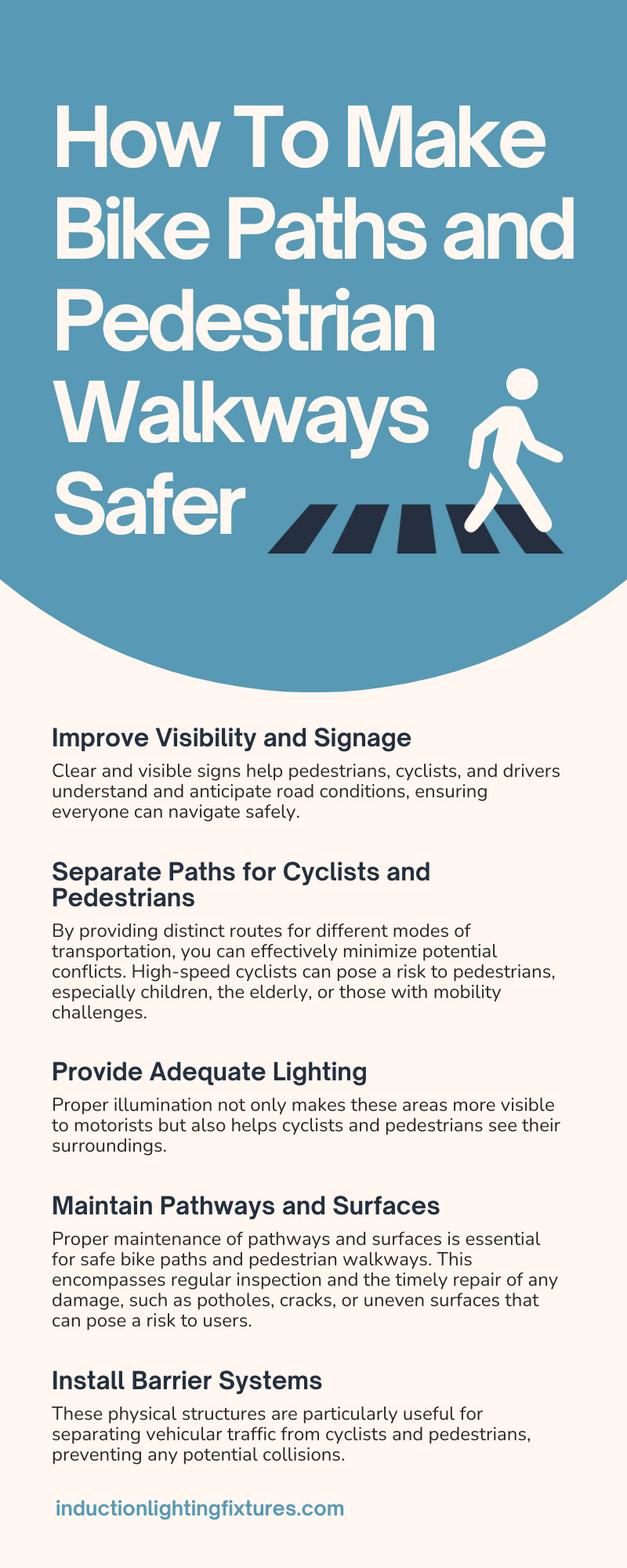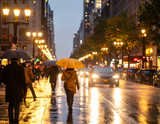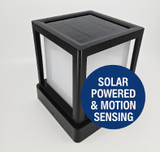How To Make Bike Paths and Pedestrian Walkways Safer
Urban populations continue to grow, and many people in cities opt to travel without cars. As a result, ensuring the safety of bike paths and pedestrian walkways has become a top priority for landowners and business owners alike. Implementing effective ways to make bike paths and pedestrian walkways safer is essential for enhancing public safety and promoting sustainable urban transportation. Let's explore ten key strategies to ensure the utmost safety on our city's walkways and bike paths.
Improve Visibility and Signage
Improving visibility and signage is a crucial aspect of enhancing safety on bike paths and pedestrian walkways. Clear and visible signs help pedestrians, cyclists, and drivers understand and anticipate road conditions, ensuring everyone can navigate safely. For instance, bike lanes should be marked and distinguishable from regular traffic lanes. Additionally, pedestrian crossing points should be well-lit and have highly visible signs to alert motorists. The use of reflective materials and adequate lighting can further improve visibility at night. Remember—a well-informed user is a safer user, making robust signage an essential component of any safety strategy.
Separate Paths for Cyclists and Pedestrians
Creating separate paths for cyclists and pedestrians is another key strategy for improving safety. By providing distinct routes for different modes of transportation, you can effectively minimize potential conflicts. High-speed cyclists can pose a risk to pedestrians, especially children, the elderly, or those with mobility challenges. Designated bike paths allow cyclists to travel efficiently without posing a danger to pedestrians. Similarly, dedicated pedestrian walkways ensure that walkers, joggers, and those using wheelchairs or strollers have a safe, uninterrupted space to move. It's also beneficial to include physical barriers between these paths when possible, such as lines of trees or raised curbs, to further ensure safety and prevent unexpected crossover. Finally, both paths should maximize accessibility by having the appropriate width, surface texture, and gradient. By clearly delineating and separating spaces, you can create a safer environment for everyone.
Provide Adequate Lighting
Adequate lighting is one of the most fundamental yet often overlooked aspects of ensuring safety on bike paths and pedestrian walkways. Proper illumination not only makes these areas more visible to motorists but also helps cyclists and pedestrians see their surroundings. They can then avoid any potential hazards, such as uneven surfaces, potholes, or other individuals. Additionally, you should strategically place lighting to illuminate the paths without causing glare or light pollution. Solar-powered or LED lights are energy-efficient choices that can offer consistent, high-quality illumination. Moreover, providing adequate lighting isn't just about installing more lights; it's about considering the type, height, location, and intensity of the lights. For instance, lights should sit at regular intervals along the path, and additional lighting may be necessary in areas where the path intersects with vehicular traffic. A well-lit path is a safer path, helping to prevent accidents and enhance the overall user experience.
Maintain Pathways and Surfaces
Proper maintenance of pathways and surfaces is essential for safe bike paths and pedestrian walkways. This encompasses regular inspection and the timely repair of any damage, such as potholes, cracks, or uneven surfaces that can pose a risk to users. In areas with heavy foot or bicycle traffic, the pathways should have durable, wear-resistant material to minimize degradation. Additionally, special attention should go to the removal of hazards like fallen leaves, snow, or ice, which can cause slips and falls. The installation of anti-slip surfaces can also greatly enhance safety in wet or icy conditions. Regularly scheduled inspections can help identify and address maintenance issues before they become hazards. It's also important to remember that a well-maintained pathway not only enhances safety but also encourages more people to walk or cycle.
Install Barrier Systems
Barrier systems are one of the best ways to make bike paths and pedestrian walkways safer. These physical structures are particularly useful for separating vehicular traffic from cyclists and pedestrians, preventing any potential collisions. There are different types of barrier systems, including bollards, guardrails, and planters, all of which you can employ based on a pathway’s specific needs.
Bollards, which are short, sturdy vertical posts installed at regular intervals, can effectively prevent vehicles from entering bike paths and walkways. They can come in a variety of materials, ranging from steel and concrete to flexible plastic. Furthermore, they can be removable or retractable to allow for emergency vehicle access.
Guardrails, on the other hand, serve as continuous barriers along the length of a path, providing even more protection from vehicular incursion. They can also have visually appealing designs, integrating seamlessly with the surrounding landscape while enhancing safety.
Planters represent another form of barrier. They not only separate traffic but also enhance the aesthetic appeal of the pathway. They can provide environmental benefits as well by adding greenery and improving air quality.
No matter what style of barrier you choose to install, it’ll have advantages and disadvantages. But with the right barrier system in place, you can create safer spaces that encourage more people to cycle or walk. This will foster healthier and more sustainable communities.
There are many important steps for creating safer outdoor paths for cyclists and pedestrians. This includes highlighting the paths, avoiding potential accidents, maintaining your landscaping, and ensuring that there's quality lighting during the evening hours.
Switching to commercial solar lighting solutions from Induction Lighting Fixtures isn’t just a step toward enhanced path safety but also a leap toward sustainability. Our cutting-edge solar lighting solutions ensure the highest visibility, providing a secure environment for cyclists, pedestrians, and drivers alike. Moreover, with solar lighting, you can reduce your carbon footprint, save on energy costs, and make your biking paths and pedestrian walkways eco-friendly. Induction Lighting Fixtures is committed to delivering the best quality, durability, and aesthetic appeal. Make the switch today for a brighter, safer, and greener tomorrow. Illuminate your paths with our commercial solar lighting solutions and be a beacon of sustainability in your community. To learn more about our products or services, contact us anytime, and a member of our team will be happy to assist you.

Recent Posts
-
How Long Will Solar Powered Lighting Operate in the Rain?
How Solar Light Fixtures Can Run for 10 Rainy Days If you’ve ever wondered how a Commercial solar li …Jul 30th 2025 -
Spotlight - The IL-SPG54 Smart Solar Walkway Light: Where Performance Meets Simplicity
Introducing the IL-SPG54 Smart Solar Walkway Light: Where Performance Meets Simplicity When it comes …Jun 16th 2025 -
Corn Bulb Sale - While supplies last!
⚡ Limited Time Sale – BLE Series Corn Lamps Starting at $24.99! Stock up now while supplies last – p …Jun 11th 2025






